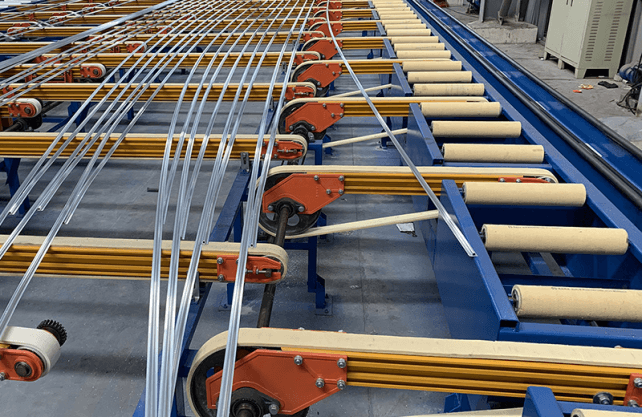Views: 86 Author: Site Editor Publish Time: 2020-07-13 Origin: Site
The conveyors together with roller conveyors have a key role for the efficient transfer of all types of materials or goods within a production plant, an industrial warehouse or logistics company.

The conveyor belts are used to move products or items that require greater stability or due to size or characteristics cannot be transported with roller conveyors. The belts can also act as processing points from which the items or products being moved are operated.
The operation of the endless conveyor belt consists of the movement of a continuous physical support, the band or belt, mounted on platforms of variable dimensions and which may have different types of accessories (side guards, stops, diverters, railings, wheels and other type;s pneumatic or mechanical accessories). The speed and load capacity will depend on both the characteristics of the material to be moved (dust, fine grain, packages, etc.) and the type of conveyor belt.
Although its basic operating principle may seem simple (the movement of a belt due to the rotation of the drums or pulleys, which in turn are powered by a motor); the conveyor belt system used in industry is much more complex and they entail a significant technological development with truly innovative technical applications.
The tape or band: One of the main materials used is rubberized fabric but they can have very variable composition, mainly derived from rubber. Plastic modular bands can also be made of acetal, polyamide, PVC, polyester, etc. This proves a wider range of application for the endless conveyor belts.
Drums or pulleys: The drums are the rollers that, with their rotation, cause the belt to advance due to the friction of the belt on them (belt transmission) or due to the action of pinions and toothed belts (chain transmission).
Motor: Depending on the location of the drive drum, we can find front or front motorization and central motorization. The power and characteristics of the motor will depend on the type of conveyor belt and its use. Likewise, the automation capacity of its operation will be a very important aspect in some production systems.
Automation systems: Electronic sensors for speed regulation, stop and start, in order to maintain a continuous and synchronized flow of the conveyor belt work through management software.
Systems for adjusting the tension: they allow the adjustment of the drums.
Self-cleaning return stations: scrapers and cleaners to remove debris and clean the belt before its return.
Systems for flat or ribbed transport (in cradle).
Self-centering stations for tape repositioning.
Impact stations with padded structures for load reception.
Endless conveyor belts are fundamental elements in today's industry. The correct operation of the conveyor belts can become decisive in the efficiency of the entire production chain and the logistics of a warehouse.
Although the operating principle is general for all of them, it is a very versatile system, since there is a great variability of belt conveyors (flat, ascending, inflected, curved, low and high speed spirals) as well as different options of manufacturing , allowing its operation to be adapted to the transport and handling of almost any type of product.